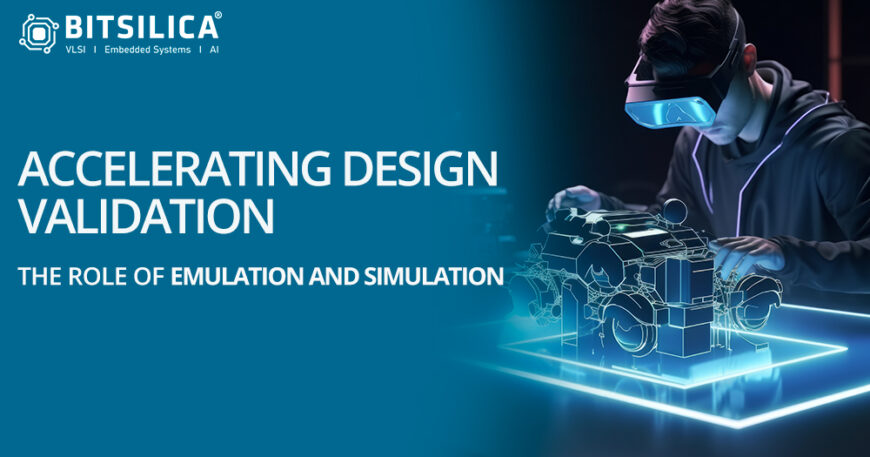Accelerating Design Validation – The Role of Emulation and Simulation
Introduction:
Two digital system design and verification methodologies reign supreme: emulation and Simulation. These indispensable tools ensure cutting-edge designs’ integrity, functionality, and performance. Understanding their nuances and leveraging their advantages is key to accelerating design validation processes. Emulation and Simulation are essential digital system design and verification methodologies, offering varying purposes and distinct benefits.
Here’s a comparison between emulation and Simulation:
1. Purpose:
Simulation: Simulation is primarily used for functional verification, where the behavior of the design is tested against the expected functionality. It verifies whether the design performs the intended operations correctly.
Emulation: Emulation is used for both functional verification and performance validation. It provides a more accurate representation of the hardware by executing the design at or near real-time speeds, allowing designers to validate timing, power, and system-level interactions.
2. Speed:
Simulation: Traditional simulations can be slower than emulation, especially for large designs. They operate at different levels of abstraction (e.g., RTL, gate-level), offering flexibility but may lack speed.
Emulation: Emulation platforms offer significantly faster execution speeds, running the design at or close to real-time. This speed advantage enables quicker identification of bugs and reduces the time-to-market.
3. Accuracy:
Simulation: Simulations provide varying levels of accuracy depending on the abstraction level used. Higher-level simulations (e.g., RTL) may abstract away timing details, leading to potential inaccuracies in timing-related behaviors.
Emulation: Emulation provides exact design modeling, capturing hardware behavior precisely at the level of individual clock cycles. This precision is crucial for verifying timing-sensitive elements of the design and ensuring it fulfills performance requirements.
4. Debugging:
Simulation: In simulations, designers leverage advanced debugging functionalities like waveform viewing, assertion-based verification, and coverage analysis. This Simulation enables them to isolate and analyze bugs efficiently across a spectrum of abstraction levels.
Emulation: Emulation platforms also offer powerful debugging capabilities, such as the ability to observe internal signals, set breakpoints, and trace the execution flow of the design. These features are crucial for debugging complex bugs in large designs.
5. Scalability:
Simulation: Simulations can scale somewhat, but computational resources and simulation time may limit their scalability. Large designs may require distributed
simulations or advanced optimization techniques for acceptable performance.
Emulation: Emulation platforms are highly scalable and can accommodate designs of varying sizes and complexities. They offer flexibility in terms of capacity, allowing designers to allocate resources dynamically based on specific design requirements.
6. System-level Verification:
Simulation: Simulation is widely used for system-level verification, where the interactions between different hardware components and subsystems are tested. It enables comprehensive validation of system functionality and performance.
Emulation: Emulation excels in system-level verification by integrating multiple hardware components and subsystems. This emulation enables designers to assess interactions between disparate system elements and affirm the system’s overall performance.
Conclusion:
In summary, while emulation and Simulation are crucial in the design and verification flow, they serve different purposes and offer complementary advantages. Simulation is ideal for functional verification and early design exploration. At the same time, emulation provides faster execution speeds, cycle-accurate modeling, and advanced debugging capabilities, making it indispensable for performance validation and system-level verification.
By harnessing the power of both methodologies, designers can navigate the complexities of modern design landscapes with confidence, ensuring the realization of innovative and reliable digital systems.





